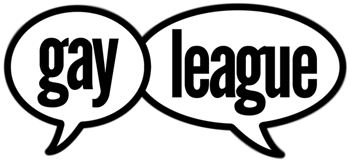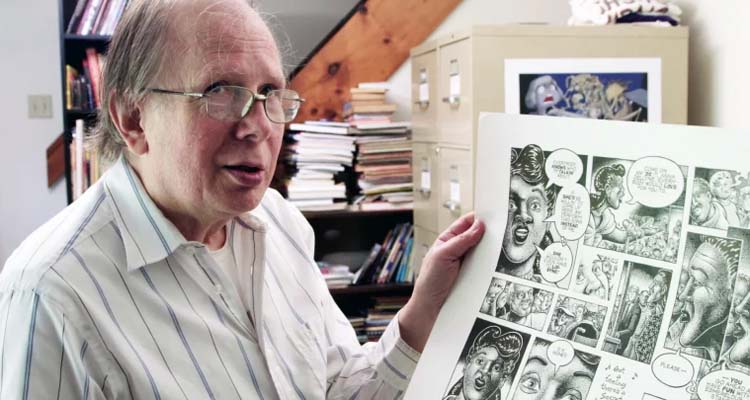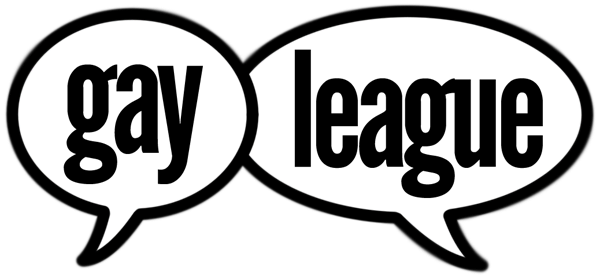Howard and I came to know each other by way of a gay BBS back in the days before the Internet. I was on a Washington DC local BBS called GLIB (the Gay and Lesbian Information Bureau), and his spouse, Eddie, was on a New York City BBS that as I recall was named The Backroom. Those systems were two of the original founders of GayCom, a network of gay BBSs from all around the country.
I was a big fan of Howard’s from the underground comix days. I enjoyed his sense of humor, and I stood in awe of his drawing skills. His lines were always perfect. I collected everything I saw that had something of his in them, plus the titles that were his alone.
When he began Gay Comix back in 1980 it was a revelation, an awakening. Prior to this all I ever saw on the head shop comic racks having anything to do with gay and lesbian people were sexual fantasies, and outright pornography. Okay, fine, We were reclaiming our sex lives out from under decades of hate, but that wasn’t all there was to our lives, no matter what the haters said. Howard’s Gay comics spoke to our lives in a way nothing I had seen before.
I realized that this was a medium through which we could speak to the world about the reality and diversity of our lives, and even more importantly to each other. Howard’s stories raised the bar orders of magnitude in their depth and humanity, from the drama of a religious and deeply closeted gay man “Jerry Mack”, to the subtly pointed comedy of “Cabbage Patch Clone”, the heartache of breaking up in “I Always Cry At Movies”, to fantastic stream of consciousness works like “Safe Sex”, Howard’s range of expression was simply amazing, and also sharp as only an artist who pays attention to the world around him and also the world within can be. His stories spoke to me. They were a brace against the hatred in the world around us. I could not get enough of them.
I’m not sure now when it was exactly that I began corresponding with him online, but I began telling him about my own cartooning work and how his website tutorials helped me learn to color my artwork among other things. Every now and then he would show his readers his roughs and that would make me feel less ashamed of my own because I could see there was no magic in it, just a lot of hard work. Howard had a focus for it I never did…my other interests were photography and software engineering, but eventually I began doing a weekly gay political cartoon for my website, which got me the notice of the editor of Baltimore OUTLoud, my local gay paper. That eventually earned me a membership in the Association Of American Editorial Cartoonists. I started a cartoon story of my own coming out process after buying and being amazed by Stuck Rubber Baby. I thought yes, I should get my own story out of me. Even if it’s only published on my own website people would still see it, and maybe gain a little understanding of what it is gay teens go through.
Over the years Howard gave me lots of encouragement to keep at it, especially my coming out story, and how important it was for us to tell our stories. He understood the power of this medium. Often he would compliment my use of color and occasionally some other aspect of my cartoons, and I would be on cloud nine. My career had taken a turn into software engineering, and when I began making enough money I would buy whatever original artwork he would put up for sale. Among the things I bought from him were one of his original Wendel pieces, and page one of Stuck Rubber Baby.
After working with and making friends in a community of survivors of ex-gay therapy, I commissioned a piece from him with just the idea that it would show the moment a gay teen comes out to his parents. He produced an amazing work that shows the moment, and two possible outcomes, good and bad. I have it on a wall in my house dedicated to him, along with other works of his.
I didn’t notice at first that he’d included little tokens of my own life in the artwork: items in that teenager’s room that spoke of my life as a part time cartoonist, and also a software engineer at the Space Telescope Science Institute. It was Howard’s way of giving me a friendly wave of the hand. I miss him terribly.
In my coming out cartoon story I’d scripted a scene with a nod to Howard in it. It involves the title to a book in his cartoon “Sometimes I Get So Mad…” But I never got the episodes of my story out in any reasonable amount of time and that episode kept getting pushed back further and further.
Something, I really can’t say what, prompted me to shuffle the order of that episode around so I could get to it quickly and let Howard see my little tip of the hat to him. He replied as he always did with how much he enjoyed reading my semi-autographical cartoon story, and with encouragement to keep at it. That always made me feel good.
I had no idea he was so ill. Not long after that he was gone. I was stunned.
I still miss him so much. But he got to see that little tip of the hat, and what all his encouragement meant to me.



